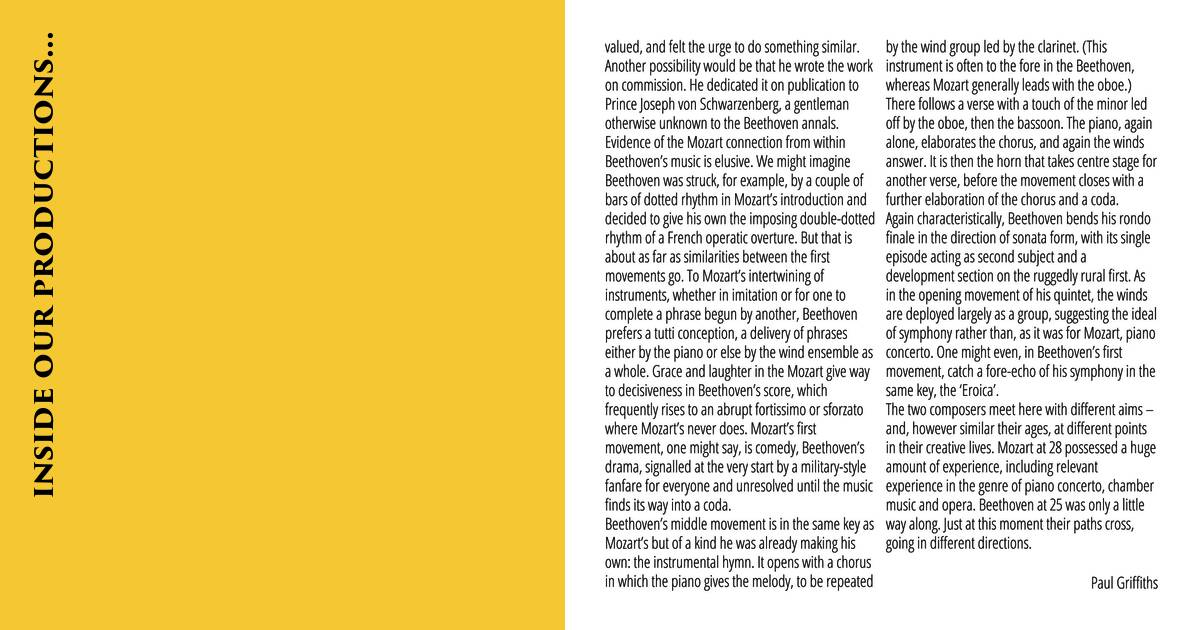
...an excerpt from a booklet from one of our publications... 0064
...immediately — not in repeating concerto form but precisely in recreating regular sonata structure as wordless conversation. Elegant and touching, the discourse begins in a slow introduction, creating an atmosphere within which the first wonderful melody can enter, on horn, followed by concurring scales from all the wind instruments in turn. The piano manoeuvres the move into a sonata allegro, whose main ideas it then sets out, but these are immediately subjected to scrutiny by the others, agreeing, processing, commenting. Scales are again a feature, too. A short development section, on the opening theme, leads into the recapitulation, which adds some twists to what was said before — not least the delightful sign-off. By contrast with the way of the first movement, though again in sonata form, the B flat Larghetto gives its initial theme to the winds, to be duly considered by the piano. All four wind players then have solos in a beautiful modulatory passage that culminates in chromatically moving wind harmony that leads to the piano’s delivery of the graceful second subject. In the recapitulation this passage of wind harmony is extended into rising, breathing waves, almost alarmingly, and a settling transition is needed before the oboe, this time, can bringin what was the piano’s theme. Finally comes an ebullient rondo, though not without moments that are troubled or affecting. After a ‘cadenza in tempo’ for everyone, however, all that remains is a romp for home. Ten weeks after the first performance, in early summer, there was a repeat outing for the quintet at the country resort of Débling, for which Mozart made sure to take Giovanni Paisiello along in his carriage. What the visiting Neapolitan master made of the quintet we cannot know, but only a dozen years later, in the spring of 1796, another composer clearly took note. Beethoven composed his quintet for the same combination — and in the same key — when he was much the same age Mozart had been back in March 1784 and in much the same circumstances, making aname for himself, and an income, as a piano teacher and evening entertainer for the aristocracy and haute bourgeoisie of Vienna. He was out of the city, however, while working on the quintet, on a concert tour that took him to Prague, Dresden, Leipzig and Berlin. How and why he based his work on Mozart's remains uncertain. The Mozart quintet was not published in its scoring with wind instruments until 1800, though Beethoven could have seen a manuscript copy or even the composer's original, which later, and perhaps by 1796, was in the hands of a close friend of his, Nikolaus Zmeskall. It is also possible he simply heard the piece, perhaps in Prague, where Mozart's music was particularly...
News,Extra


